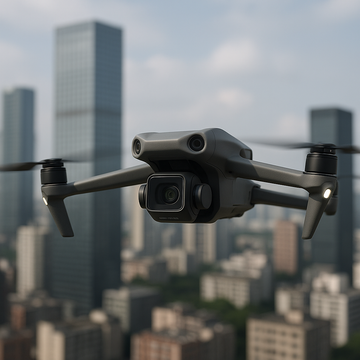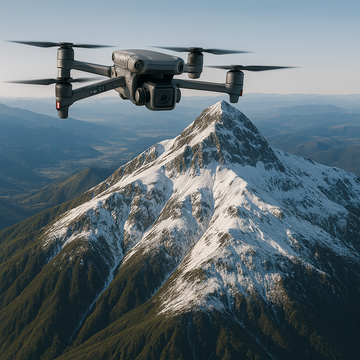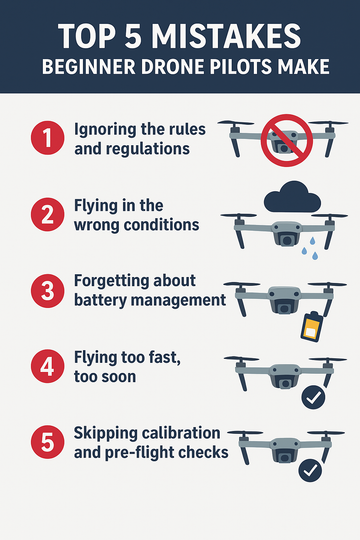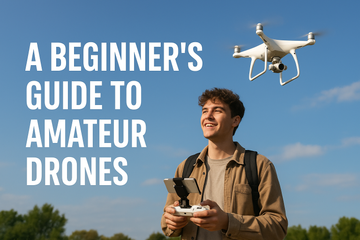Flying a drone in a sprawling, dynamic urban environment is an exhilarating experience, but it also comes with unique challenges. Tall buildings, power lines, and dense foliage all pose a significant risk to your aircraft. While manual pilot skills are paramount, modern drones have a powerful safety net built-in: Smart Return to Home (RTH). This isn't your average "go back to where you started" function; it's an intelligent system that is crucial for safer urban flights.
The Problem with "Dumb" RTH in the City
Traditional RTH systems are often very basic. When triggered, the drone will ascend to a pre-set altitude and fly in a straight line back to its home point. In a wide-open field, this works perfectly. In a city, however, this approach is a recipe for disaster. The drone could fly into a skyscraper, a crane, or a tree, resulting in a costly crash. This is where the "smart" in Smart RTH makes all the difference.
How Smart RTH Works
Smart RTH, available on many advanced drones, is a sophisticated system that leverages a drone's onboard sensors and processing power to make real-time decisions. Instead of simply ascending and flying straight, it intelligently plans the safest and most efficient path home.
Key features that make it "smart":
-
Real-time Obstacle Avoidance: This is the core of Smart RTH. As the drone flies back, its omnidirectional vision sensors and other systems (like LiDAR on some high-end models) are constantly scanning the environment. If it detects an obstacle in its path, it will automatically adjust its trajectory to fly around it, rather than just climbing over it. This is especially vital in urban canyons where a straight-line path is almost guaranteed to be blocked.
-
Dynamic Route Planning: The drone's processors analyze the route back to the home point, taking into account the drone's current altitude, location, and the position of known obstacles. If a direct path is blocked, it will calculate an alternative, safer route to get home. This is a game-changer for navigating complex environments.
-
Advanced Low-Battery Logic: Smart RTH doesn't just wait for the battery to hit a critical level. It continuously calculates the power needed to return home from its current location. If the drone is too far away to make it back, it will trigger an RTH sequence, ensuring it lands safely before the battery gives out. This prevents a "forced landing" scenario in an unknown or unsafe location.
Practical Tips for Safer Urban Flights
Even with the most advanced Smart RTH system, a pilot's preparation is the most important factor for a safe flight.
-
Set Your RTH Altitude Carefully: Before every flight, set your RTH altitude to be higher than the tallest building or structure in your flight path. While Smart RTH can avoid obstacles, a high RTH altitude provides an extra layer of safety and ensures the drone flies over most obstructions if it loses signal.
-
Keep Your Home Point Up-to-Date: For longer flights, especially if you move to a new location, remember to refresh your home point in the drone's app. This ensures the drone knows exactly where to go if it needs to return.
-
Maintain Visual Line of Sight: Always keep your drone in your visual line of sight. While the live feed is excellent, your own eyes are the best tool for spotting potential hazards, especially other aircraft.
-
Be Aware of Interference: Urban environments are filled with radio interference from Wi-Fi, cell towers, and power lines. This can affect signal stability. Smart RTH is designed to handle this, but being aware of your surroundings can help you avoid areas with heavy interference.
Smart RTH isn't just a convenience; it's a critical safety feature that empowers pilots to fly with confidence in complex environments. By understanding how this technology works and combining it with smart flying practices, you can unlock the creative potential of urban aerial photography and videography while minimizing risk.
#DroneSafety #SmartRTH #UrbanFlight #DroneTips #DJI #SaferFlying #DronePilots #ReturnToHome #AerialPhotography #TechReview






